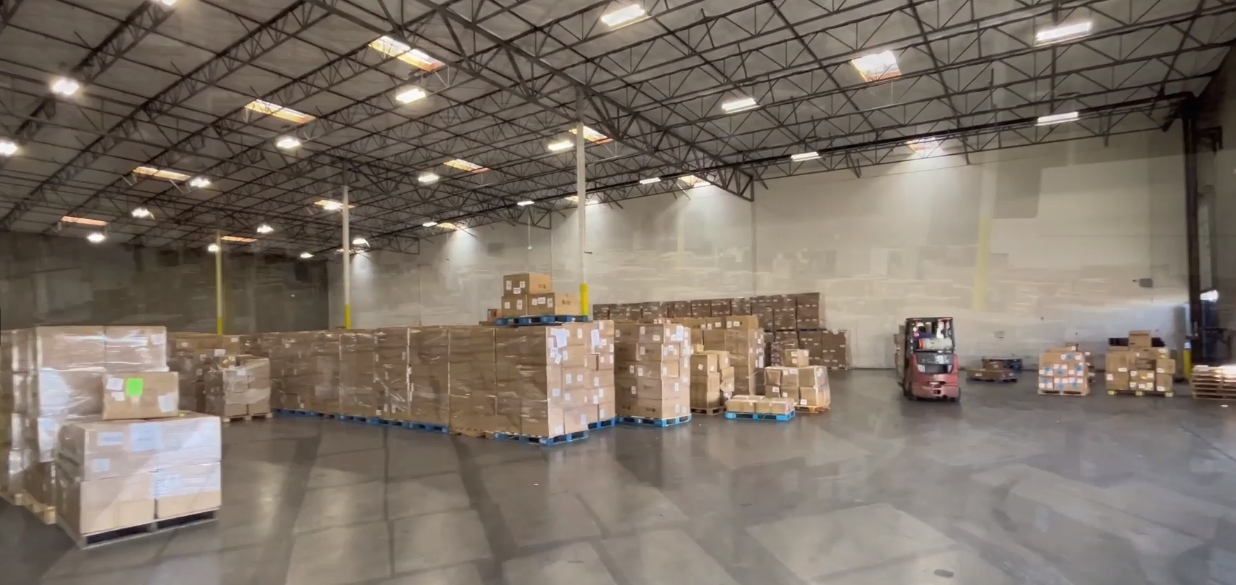אופטימיזציה של בקרת מלאי להרחבה עסקית גלובלית
ניהול מלאי ב מחסנים בחו"ל משמש תפקיד חשוב להצלחת שרשרת האספקה הבינלאומית. ניהול מלאי יעיל לא רק מפחית עלויות אלא גם מבטיח זמינות מוצ timely ללקוחות בשווקים שונים. עסקים שממנפים מחסנים בחו''ל בצורה יעילה יכולים לשפר את מילוי ההזמנות, למזער מחסור במלאי ולשפר את שביעות הרצון הכללית של הלקוחות.
חשיבות המעקב המדויק אחרי מלאי במחסנים בחו''ל
מעקב מדויק אחרי רמות המלאי במחסנים מחסנים בחו"ל הוא יסוד להפעלה חלקה. ידיעת המלאי הזמינה, מיקומה והזמן שבו יש למלא אותו מחדש עוזרת למנוע גם הצטברות מלאי מוגזמת וגם מחסור בו. דיוק זה תומך בחיזוי הביקוש ובתכנון הייצור, ומאפשר לעסקים להסכים את ההיצע לצרכים השוק.
מערכות לעקוב אחרי מלאי המשולבות עם מחסנים בחו''ל מקדמות תצפית בזמן אמת ומספקות נתונים חיוניים לקבלת החלטות. מערכות כאלו עשויות לכלול סריקת ברקוד, תגי RFID ועדכון אוטומטי של רישומי המלאי. טכנולוגיות אלו מפחיתות טעויות אנושיות ומספקות התראות עתירות על התאמת מלאי.
תפקיד חיזוי מלאי במחסנים בחו''ל
חיזוי מלאי הוא רכיב נוסף חשוב בניהול מלאי במחסנים בחו''ל. על ידי ניתוח נתוני מכירות היסטוריים, מגמות עונתיות ושינויים בשוק, חברות יכולות לחזות את הביקוש בעתיד במדויק יותר. תובנה זו עוזרת לתכנן רמות מלאי מתאימות ומפחיתה את הסיכון להחזיק מלאי מוגזם או לא מספק.
החיזוי מאפשר גם שיתוף פעולה טוב יותר עם ספקים ושותפי לוגיסטיקה. כשחברות מעריכות שינוי בביקוש, הן יכולות לתכנן משלוחי השלמה למחסנים בחו''ל ביעילות רבה יותר, להימנע מהישגים ולשפר את חוויית הלקוח.

אסטרטגיות לאופטימיזציה של מלאי במחסנים בחו''ל
יישום שיטת מלאי בזמן אמת (Just-in-Time)
ניהול מלאי בזמן (JIT) הוא גישה שנועדה למזער את החזקת המלאי על ידי קבלת סחורות רק לפי הצורך. יישום עקרונות JIT על מחסנים בחו"ל דורש תיאום הדוק עם ספקים וספקי לוגיסטיקה כדי להבטיח חידוש מהיר וללא הפרעות.
אסטרטגיה זו עוזרת בהפחתת עלויות אחסון ובסיכון של התיישנות מלאי, במיוחד למוצרים בעלי חיי מדף מוגבלים או ביקוש משתנה במהירות. עם זאת, היא מחייבת תובנות חזקות ברשת האספקה ותוכנית חירומית להתמודדות עם עיכובים לא צפויים.
איזון רמות המלאי הביטחוני להבטיח אמינות
בעוד ש-JIT ממקד בהפחתת מלאי, שיקום רמות מלאי ביטחוני מספקות במפעלים בחו''ל הוא חיוני למניעת סיכונים. המלאי הביטחוני משמש ככ Cushion במהלך הפרעות באספקה, גלי ביקוש או עיכובים בהובלה.
קביעת רמות מלאי הביטחון האופטימליות כוללת ניתוח של היציבות בהיצע ובביקוש, זמני מנהיגות ויעדי שירות. מציאת האיזון הנכון מבטיחה שההזמנות של הלקוחות יסופקו באופן עקבי מבלי להעמיס יתרה על איחסון במחסנים.
טכנולוגיות ואמצעים לניהול מלאי במחסנים בחו''ל
מערכות ניהול מחסנים לשליטה מתקדמת
מערכות ניהול מחסנים (WMS) הן אמצעים חיוניים לניהול מלאי במחסנים רבים ברחבי העולם. מערכות אלו מקוות את הפעילות על ידי אוטומציה של משימות כמו קבלת סחורה, איסוף, אריזה והובלה.
פלטפורמות WMS מספקות תובנות מפורטות על תנועת המלאי, מיקומו וสถานוסו, ועוזרות למנהלים למקסם את ניצול השטח ולצמצם טעויות. שילוב עם מערכות תכנון משאבים ארגוניים (ERP) מעצים את הקואורדינציה בין תפקידי קנייה, מכירות ולוגיסטיקה.
בשימוש בניתוחי נתונים לייעול מלאי
ניתוח נתונים מאפשר לעסקים לדייק את אסטרטגיות הניהול במלאי במחסנים בחו"ל. על ידי בחינה של מגמות מכירה, התנהגות לקוחות וביצועי שרשרת האספקה, חברות יכולות להשיג תובנות משמעותיות כדי לשפר את תכנון המלאי וההקצאה.
ניתוח מתקדם יכול גם לזהות מלאי איטי או מיושן, ולהוביל להחלטות מדויקות בזמן על ניקוז או התחדשות. פיקוח מתמיד על הנתונים תומך בתגובה גמישה לשינויים בתנאי השוק, ומחזק את יעילות הפעולה של המחסנים בחו"ל.
שיטות מומלצות בניהול מלאי למחסנים בחו"ל
הקמת מדיניות ונהלי מלאי ברורים
קביעת מדיניות ונהלי מלאי סטנדרטיים היא בסיס לתقינות ודיוק במחסנים בחו"ל. הנחיות ברורות בניהול מלאי, בקרת איכות, ספירת מחזור ודיווחים תורמות למזעור של סטיות ומבטיחות עמידה בדרישות.
הכשרה קבועה לעובדי מחסנים מחזקת את הדבקות במדיניות זו, ומעודדת אחריות ומצוינות בתפעול. הליכים מDOCUMENTED גם תורמים לאודיטים וreviews ביצועים חלקים יותר.
עדיפות לתקשורת ושיתוף פעולה
ניהול מלאי אפקטיבי במחסנים בחו''ל תלויה בתקשורת בין כלל הגורמים המשותפים בשרשרת האספקה. שיתוף מידע בזמן אמת בין צוותי רכש, מנהלי מחסנים, ספקי לוגיסטיקה ומחלקת מכירות מאפשר פעולה מאוחדת.
שיתוף פעולה מגביר את המהירות בהגابة על תנודות ביקוש, דחיית משלוחים וקשיים תפעוליים אחרים. שילוב בפלטפורמות תקשורת דיגיטליות ופתרונות תוכנה משולבים תומך גם הוא בע suốtות ובעבודת צוות.
התמודדות עם אתגרים בניהול מלאי במחסנים בחו''ל
טיפול חוזר ובלוגיסטיקה הפוכה בצורה יעילה
ניהול החזרות מציב אתגרים ייחודיים במחסנים בחו''ל. עיבוד מהיר ומדויק של פריטים המוחזרים הוא חיוני לשמירה על שלמות המלאי ורמת סיפוק הלקוחות.
יישום תהליכי לוגיסטיקה הפוכה יעילים, הכוללים בדיקה, שיקום, החזרה למלאי או סילוק, ממזער אובדן ומעלה את יעילות תהליכי העבודה. אוטומציה ומדיניות ברורה תורמות לעיבוד מהיר של החזרות.
ניהול עמידה בדרישות חוק ותקנות
ניהול מלאי במחסנים בחו''ל חייב לעמוד בתקנות מקומיות הנוגעות לתנאי אחסנה, סימון ותקני ביטחון. הבנת הדרישות האלה וודאות ביצוען מגינה על העסק מפני סיכונים משפטיים והפרעות בתפעול.
שיתוף פעולה עם ספקי שירות מקומיים מוכרים וاجراء ביקורות עמידה תקופתיות תומכים בתפעול חלק של המחסנים ובהסכמה לדרישות הרגולטוריות.
שאלות נפוצות
מהן ההפצות המרכזיות של ניהול מלאי במחסנים בחו''ל?
ניהול מלאי במחסנים בחו"ל מקטין זמני משלוח, מוריד עלויות משל송 ומשפר את שביעות הרצון של הלקוחות על ידי ודיאת זמינות המוצרים בקרבת שווקי היעד.
באילו אמצעים טכנולוגיים ניתן להיעזר כדי לשפר את דיוק המלאי במחסנים בחו"ל?
טכנולוגיות כגון מערכות ניהול מחסנים וסריקת ברקודים אוטומטיות את תהליך מעקב אחר המלאי, מפחיתות טעויות ומספקות נתונים בזמן אמת לצורך קבלת החלטות טובה יותר.
אילו גורמים קובעים את רמות הביטחון האופטימליות של המלאי במחסנים בחו"ל?
רמות מלאי הביטחון תלויות בשונות הביקוש, זמני מנהיגות האספקה ודרגת השירות הרצויה, תוך איזון בין אמינות לבין יעילות כלכלית מבחינת עלויות אחסון.
איך החזרות משפיעות על ניהול המלאי במחסנים בחו"ל?
טיפול יעיל בהחזרות עוזר לשמירה על רישומי מלאי מדויקים, מפחית אובדן ומאיץ את תהליך ההחזרה של המוצרים למלאי או לסילוק.

